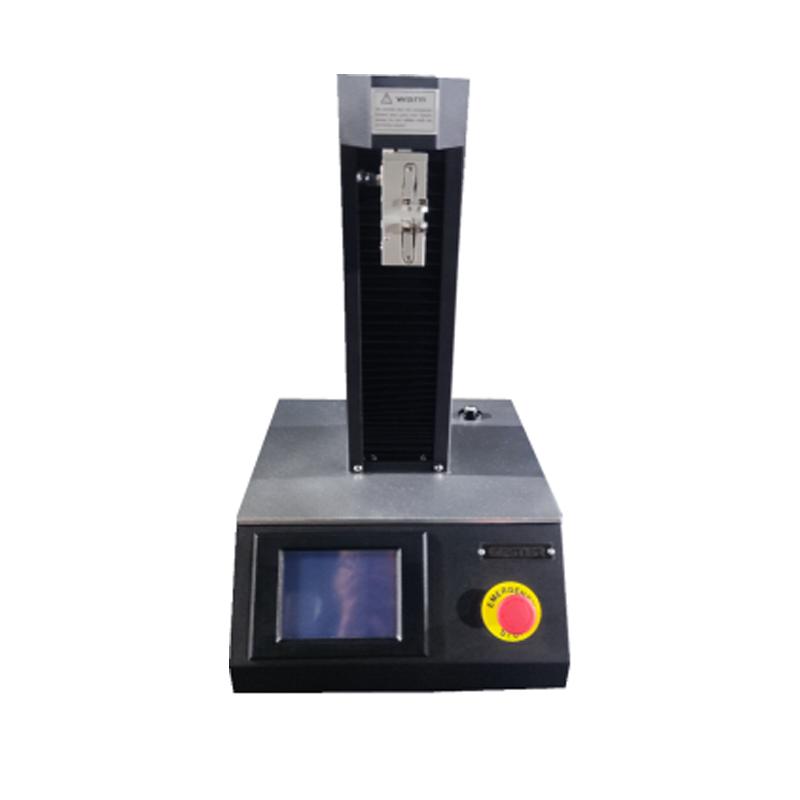A Comprehensive Overview to Optical Measurement System for Fiber Analysis
When it pertains to fiber evaluation, understanding optical measurement systems is crucial for assessing efficiency and guaranteeing top quality. You'll check out important strategies like interferometry and spectroscopy, which aid you measure crucial parameters. However there's more to it than just these approaches; understanding attenuation dimension methods can substantially influence your network's efficiency. As you navigate via this guide, you'll reveal insights that could change your approach to optical fiber.
Understanding Optical Measurement Solutions
When you discover optical dimension systems, you'll uncover they're crucial for analyzing fibers with precision. These systems utilize light to assess different characteristics of fibers, consisting of diameter, refractive index, and harmony. By utilizing methods like interferometry and spectroscopy, you can obtain valuable insights into the fiber's properties.You'll find that these systems are designed to lessen errors and boost accuracy, guaranteeing reputable data for your evaluation. Different setups, such as single-mode and multi-mode systems, satisfy details fiber types, allowing you to choose the very best fit for your needs.Moreover, the integration of innovative software program tools assists you translate the data effectively, making it easier to recognize any type of inconsistencies or flaws. As you examine deeper into these measurement systems, you'll appreciate just how they simplify the logical process and enhance the general high quality of fiber production and testing.
Secret Parameters for Fiber Analysis
Key criteria for fiber analysis play a crucial role in establishing the high quality and performance of fiber optics. When you evaluate a fiber, you'll intend to focus on characteristics such as depletion, bandwidth, and modal diffusion. Depletion measures the loss of signal toughness as light travels via the fiber. A reduced attenuation worth indicates better top quality and longer transmission distances - fiber measurement.Bandwidth refers to the data-carrying ability of the fiber and is essential for high-speed interaction. You'll require to assess the transmission capacity to guarantee it satisfies your application requirements. Modal dispersion, which arises from the different rates at which light journeys through different modes in multimode fibers, affects signal clearness
Methods for Attenuation Measurement

Transmission capacity and Its Effect on Efficiency
Comprehending data transfer is essential for maximizing fiber efficiency, as it straight influences the amount of data that can be sent over a network. Higher bandwidth means you can send more details simultaneously, allowing for faster communication and far better total efficiency. When you're dealing with fiber optics, it's vital to take into consideration exactly how transmission capacity connects with fiber qualities, such as core size and product properties.If the bandwidth is limited, you may experience information loss or slower speeds, affecting your applications. Additionally, various sorts of fibers can support differing data transfer levels, so it is necessary to select the best fiber for your particular needs.You should additionally keep in mind that ecological variables, like temperature and external interference, can affect transmission capacity. By recognizing these facets, you can make educated decisions to enhance your fiber optic systems, making certain reliable and efficient data transmission.
Refractive Index Measurement Approaches

Complete Internal Reflection
Overall inner reflection (TIR) functions as a fundamental principle for determining the refractive index of fibers. When light journeys from a denser tool to a much less dense one, it can just be fully reflected if the angle of occurrence surpasses a certain threshold, known as the crucial angle. This sensation permits you to figure out the refractive index by analyzing the angles at which light shows or refracts. By using an arrangement that routes light right into a fiber and measures the resulting angles, you can compute the refractive index properly. Recognizing TIR not just boosts your fiber analysis yet likewise enhances the design and efficiency of optical systems. Leveraging TIR can lead to more efficient fiber-based applications.
Interferometric Methods
Structure on the concepts of overall inner representation, interferometric techniques provide an effective means for measuring the refractive index of fibers with high accuracy. These techniques exploit the interference patterns created when beams split and recombine after traveling different paths. You can make Homepage use of configurations like the Michelson or Mach-Zehnder interferometer to analyze phase changes triggered by changes in refractive index. By meticulously adjusting your system and examining the resulting edges, you can establish the refractive index with impressive precision. It's essential to maintain stable environmental conditions to minimize mistakes. With these techniques, you'll boost your understanding of fiber residential properties, leading to much better efficiency in various applications, from telecoms to sensing unit innovation.
Modal Dispersion and Its Relevance
Modal diffusion describes the dispersing of light pulses as they take a trip through a fiber, which can affect the overall efficiency of the system. You'll see that this sensation can result in signal distortion, affecting data transmission prices and top quality. Recognizing its significance is necessary for enhancing fiber optic styles.
Meaning of Modal Diffusion
In fiber optics communications, modal diffusion plays a significant duty in establishing signal top quality and transmission speed. It takes place when various light modes travel at differing speeds through the fiber. Given that each setting has distinct courses and characteristics, they can reach the obtaining end at different times. This time distinction can bring about indicate spreading and distortion, which can deteriorate the overall efficiency of the interaction system. You may experience modal dispersion largely in multimode fibers, where the numerous paths of light aggravate the problem. Understanding modal dispersion is essential for optimizing fiber designs and making certain that your communication systems run successfully, keeping the stability of the transmitted signals over longer distances.
Results on Fiber Efficiency
Understanding modal dispersion assists highlight its impacts on fiber performance. This phenomenon occurs when various modes of light traveling at differing rates within the fiber, leading to signify spreading with time. As you analyze optical fibers, you'll observe that enhanced modal dispersion can substantially degrade signal top quality, resulting in minimized bandwidth and longer transmission ranges. In useful terms, this indicates your information can get here distorted or delayed, influencing overall interaction efficiency. To minimize these impacts, you could think about utilizing single-mode fibers, which decrease modal dispersion. By selecting the best fiber type and comprehending exactly how modal dispersion affects efficiency, you can enhance transmission quality and guarantee dependable information transfer in your optical dimension systems.
Tools and Technologies for Optical Measurements
When it comes to optical measurements, several innovative devices and modern technologies go to your disposal to improve fiber evaluation. You'll discover fiber optic testers, which analyze signal high quality and performance, essential for keeping optimal network performance. Optical time-domain reflectometers (OTDRs) are important for finding mistakes and determining loss over ranges, giving in-depth understandings right into fiber honesty. Furthermore, spectrometers can examine light spectra, helping you determine material residential or commercial properties and composition.Don' t overlook the value of imaging systems, like electronic microscopes, that enable you to aesthetically evaluate fiber surface areas for defects. Likewise, think about using polarization analyzers to gauge stress and anxiety and strain in fibers, which is vital for recognizing their actions under numerous conditions. By leveraging these tools and technologies, you can considerably boost your fiber analysis processes, guaranteeing integrity and high performance in more info here your optical networks.
Frequently Asked Inquiries
What Are the Costs Related To Optical Measurement Solutions?
The expenses connected with optical dimension systems can vary significantly. You'll need to review equipment rates, maintenance costs, software licenses, and possible training expenses. Budgeting thoroughly will assist you prevent unanticipated economic obstacles down the line.

Exactly How Often Should Fiber Analysis Be Executed?
You should carry out fiber analysis regularly, normally every 6 months or after significant modifications in the setting (optical fibre diameter analyzer). This ensures perfect performance and aids recognize prospective problems prior to they influence your system's effectiveness and dependability
Can Optical Measurement Equipments Be Calibrated in the house?
Yes, you can adjust optical dimension systems in the house, but it requires precision. Make certain you follow the manufacturer's standards, you could look here make use of appropriate calibration requirements, and double-check your results to ensure accuracy in your measurements.
What Industries Commonly Make Use Of Optical Measurement Systems?
You'll discover optical dimension systems widely utilized in industries such as telecoms, manufacturing, medical care, and research study. They're crucial for quality assurance, fiber evaluation, and ensuring accurate measurements in numerous applications, improving performance and precision across fields.
Are There Any Type Of Safety Issues With Optical Measurement Systems?
Yes, there are security interest in optical measurement systems. You need to always put on protective eyewear to protect your eyes from intense source of lights and guarantee correct training to take care of equipment securely and stay clear of crashes.
 Joseph Mazzello Then & Now!
Joseph Mazzello Then & Now! Lisa Whelchel Then & Now!
Lisa Whelchel Then & Now! Atticus Shaffer Then & Now!
Atticus Shaffer Then & Now! Dolly Parton Then & Now!
Dolly Parton Then & Now! Peter Billingsley Then & Now!
Peter Billingsley Then & Now!